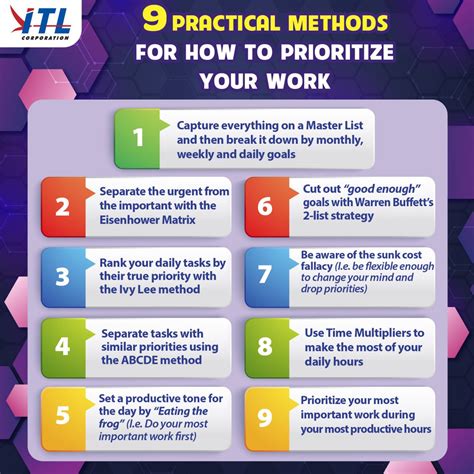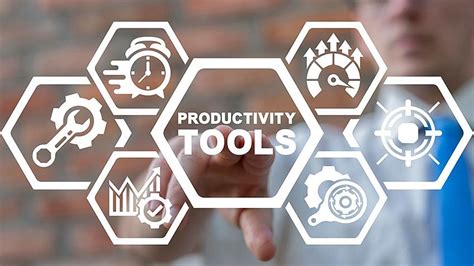Time is the ultimate equalizer. We all have the same 24 hours in a day, yet some individuals seem to effortlessly achieve more than others. So, what's their secret? How do they manage to consistently maximize their output and make each minute count? It's all about mastering the art of time management and harnessing its power to unlock your productivity potential.
In today's fast-paced world, where distractions lurk at every corner, developing effective time management skills is crucial. It's not just about working harder or longer; it's about working smarter. By honing your ability to prioritize tasks, eliminate time-wasting activities, and focus your energy on what truly matters, you can create a productive workflow that leaves you feeling accomplished at the end of each day.
Harnessing the power of time management requires a multifaceted approach. You must strike a delicate balance between structure and flexibility to adapt to the ever-changing demands of your personal and professional life. It's about finding the harmony between being disciplined in your routines and allowing room for spontaneity and creativity. With the right strategies in place, you can transform your relationship with time and achieve a level of productivity you never thought possible.
Prioritize Your Workload: Make the Most of Your Time

When it comes to maximizing productivity and making the most efficient use of your time, it's essential to have a clear understanding of your tasks' priority. Prioritizing your workload can greatly impact your ability to successfully manage your time and accomplish your goals.
To effectively prioritize your tasks, start by identifying the most important and urgent ones. These are the tasks that require immediate attention and have significant consequences if not completed promptly. Consider using a system or method that works best for you, such as creating a to-do list, using a digital task management tool, or utilizing a time management matrix.
Once you have determined your high-priority tasks, organize them in a logical order based on their importance and deadline. Consider the potential impact each task has on your overall objectives and allocate time and resources accordingly. By establishing clear priorities, you can focus your energy on tasks that align with your goals and deliver the most significant results.
Furthermore, it's crucial to stay flexible and adaptable in your approach to task prioritization. As unexpected priorities or urgent matters arise, reassess and adjust your task list accordingly. Being able to rearrange your priorities enables you to address new challenges efficiently and ensure that your time and efforts are directed towards the most critical tasks at any given moment.
Remember that effective task prioritization involves more than just considering urgency and importance. Take into account other factors, such as dependencies between tasks, potential risks, and the availability of necessary resources. By considering these aspects, you can anticipate potential obstacles and allocate your time strategically, enabling smoother progress and improved productivity.
- Regularly review and update your task priorities to stay on top of your workload.
- Break down larger tasks into smaller, manageable subtasks for better organization and progress tracking.
- Communicate your priorities and deadlines with colleagues or team members to ensure alignment and support.
- Consider using productivity techniques like the Pomodoro Technique or time blocking to enhance focus and manage time effectively.
- Celebrate achievements and milestones to maintain motivation and a sense of accomplishment throughout your tasks.
By prioritizing your workload effectively, you can minimize stress, increase productivity, and achieve better results in both your personal and professional life. Remember, mastering the art of task prioritization takes practice and continuous improvement, but the benefits are well worth the effort.
Setting Clear Objectives and Deadlines
In order to optimize your time management skills and enhance overall productivity, it is crucial to set clear goals and establish deadlines. By defining specific objectives and time frames, you can effectively prioritize tasks and ensure a focused approach towards achieving your desired outcomes.
- Identify Your Priorities: Begin by identifying your main priorities and determining what needs to be accomplished. Clearly define what success looks like for each objective.
- Break It Down: Take larger goals and break them down into smaller, manageable tasks. This helps create a roadmap and keeps you on track towards your ultimate objective.
- Create a Timeline: Assign deadlines to each task and establish a timeline for completion. Be realistic about the time required for each task and adjust your schedule accordingly.
- Use Visual Reminders: Utilize visual aids such as calendars, to-do lists, or project management tools to keep track of your goals and deadlines. These visual reminders can help you stay focused and motivated.
- Be Flexible: While setting deadlines is important, it is equally essential to remain flexible. Recognize that unexpected obstacles or changes may arise, and be prepared to adjust your schedule accordingly without compromising the attainment of your goals.
- Regularly Review and Evaluate: Regularly review your progress, evaluate your achievements, and reassess your goals if needed. This allows for adaptation and helps ensure that your objectives remain relevant and aligned with your overall vision.
Setting clear objectives and deadlines enables you to effectively allocate your time and resources. By focusing on what is truly important and establishing a timeline for completion, you can enhance your productivity and achieve greater success.
Create a Daily Schedule

Optimize your daily routine with a well-structured schedule that allows you to efficiently manage your time and boost your productivity. By carefully planning out your day, you can prioritize tasks, set realistic goals, and ensure that important activities are accomplished.
Time Slot | Activity |
Morning | Embark on essential tasks during your energetic prime, tackling the most challenging or creative assignments. |
Mid-Morning | Devote this time to focused work, prioritizing tasks that require concentration and attention to detail. |
Afternoon | Reserve this period for meetings, brainstorming sessions, and collaborative work that benefits from social interaction. |
Mid-Afternoon | Take a short break to recharge, stretch, or engage in relaxation techniques to maintain mental clarity and productivity. |
Late Afternoon | Address administrative tasks, reply to emails, or engage in less demanding activities that still contribute to your goals. |
Evening | Wrap up your day by reviewing progress, organizing your workspace, and mentally preparing for tomorrow's tasks. |
Remember to allow flexibility in your schedule to accommodate unexpected events or changing priorities. By adhering to a well-designed daily schedule, you can optimize your time utilization, enhance productivity, and maintain a healthy work-life balance.
Eliminate Distractions: Focusing Your Energy for Optimal Productivity
In our fast-paced world, it is essential to optimize our time and energy for maximum productivity. One of the key strategies to achieve this is to minimize distractions. By minimizing the things that divert our attention and consume our time, we can create a focused and efficient work environment.
To begin with, it is important to identify and eliminate external distractions. This can include turning off notifications on your phone or computer, finding a quiet workspace, and minimizing interruptions from colleagues or family members. These external distractions can significantly impact our ability to concentrate and complete tasks in a timely manner.
In addition to external distractions, internal distractions can also hinder our productivity. These can include negative thoughts, excessive worrying, or feeling overwhelmed. To combat these internal distractions, it is helpful to practice mindfulness and develop techniques to stay present and focused. This may involve taking short breaks, practicing deep breathing exercises, or incorporating meditation into your daily routine.
- Create a dedicated work environment: Designate a specific area for work that is free from distractions, such as clutter or personal items.
- Establish a routine: Set a consistent schedule and stick to it, as this can help train your brain to focus during designated work hours.
- Set clear boundaries: Communicate your work boundaries to others, establishing certain times when you should not be disturbed unless it's an emergency.
- Utilize productivity tools: Take advantage of technology that can help manage distractions, such as website blockers or time-tracking apps.
- Prioritize tasks: Break down your workload into manageable chunks and prioritize tasks based on their importance and deadlines.
- Eliminate multitasking: Although it may seem efficient, multitasking can actually decrease productivity. Instead, focus on completing one task at a time before moving on to the next.
By implementing these strategies and minimizing distractions, you can create a more focused and productive work environment. Remember, success in time management and increased productivity requires discipline and consistent effort. Stay dedicated and committed to your goals, and you will reap the rewards of improved efficiency and accomplishments.
Maximizing Efficiency Through Delegation and Task Outsourcing

One effective strategy to optimize productivity and manage time efficiently is to delegate and outsource tasks. By entrusting specific responsibilities to others or seeking external assistance, individuals can alleviate their workload, enhance focus on priority tasks, and achieve higher efficiency.
Delegating tasks involves assigning certain responsibilities to trusted team members or colleagues who possess the necessary skills and expertise. This allows individuals to leverage the collective abilities of the team and effectively distribute workload, while empowering team members and promoting a sense of ownership.
Outsourcing tasks, on the other hand, involves seeking specialized external assistance, either from freelancers, agencies, or virtual assistants. Outsourcing offers the advantage of accessing expertise that might not be available within the team, enabling individuals to tap into a wider skill set and receive high-quality deliverables.
When deciding which tasks to delegate or outsource, it is crucial to assess their urgency, complexity, and alignment with one's core skills. Routine and time-consuming tasks, such as administrative work or data entry, can often be efficiently handed over to others, allowing individuals to focus on strategic decision-making and tasks that directly contribute to their goals and objectives.
Successful delegation and outsourcing require effective communication, clear instructions, and regular check-ins to ensure tasks are being completed according to expectations. Regular feedback and recognition for a job well done encourage motivation and a sense of accomplishment among team members or external partners.
By embracing delegation and outsourcing as strategic tools for time management, individuals can free up valuable time, streamline workflow, and allocate energy towards tasks that drive productivity and overall success.
Take Regular Breaks
Rest and rejuvenation are essential to maintaining a high level of productivity and efficiency in your daily activities. It is important to carve out time for breaks throughout the day to recharge and prevent burnout.
During these breaks, give yourself permission to step away from your work and engage in activities that help you relax and refocus. This could include taking a short walk outside, practicing mindfulness or deep breathing exercises, indulging in a quick meditation session, or engaging in a hobby or interest that brings you joy.
By taking regular breaks, you provide your mind and body with the opportunity to rest and recharge, which ultimately enhances your overall productivity and improves the quality of your work. These breaks not only allow you to regain focus and clarity, but they also prevent mental fatigue and increase your ability to problem-solve and make informed decisions.
It is important to remember that taking breaks does not mean you are slacking off or wasting time. In fact, it is quite the opposite. Breaks are an integral part of effective time management as they help you maintain a sustainable pace and ensure that you are consistently delivering your best work.
Therefore, make it a habit to schedule and prioritize regular breaks throughout your day. Set reminders or use time management techniques such as the Pomodoro Technique to ensure that you are allocating dedicated time for rest and relaxation. Embrace the notion that by taking care of yourself and recognizing the importance of breaks, you are ultimately enhancing your productivity and achieving greater success in your endeavors.
Productivity Tools and Apps for Enhanced Efficiency

The advancement of technology has led to the development of numerous productivity tools and applications that can significantly improve your time management skills and overall productivity. These tools offer a wide range of features and functionalities to help you stay organized, focused, and efficient in your daily tasks. Embracing these productivity tools and apps can make a substantial difference in how you allocate and utilize your time, ultimately leading to increased productivity and better outcomes.
Task Management ToolsTask management tools enable you to create, organize, and prioritize your tasks effectively. By utilizing these tools, you can easily break down large projects into smaller, manageable tasks, set deadlines, and track your progress. Some popular task management tools include Todoist, Asana, and Trello. These tools offer features such as project collaboration, task reminders, and progress tracking, allowing you to stay on top of your responsibilities and complete tasks efficiently. |
Calendar and Scheduling AppsCalendar and scheduling apps offer a convenient way to manage your time and schedule effectively. These apps help you prioritize your appointments, meetings, and deadlines, ensuring that you never miss an important event. They provide features like reminders, notifications, and synchronization with other devices, allowing you to stay organized and on track. Popular calendar and scheduling apps include Google Calendar, Microsoft Outlook, and Apple Calendar. |
Note-Taking AppsNote-taking apps are excellent tools for capturing and organizing your ideas, thoughts, and important information. These apps provide an efficient way to take notes, create checklists, and store relevant documents. Additionally, many note-taking apps offer features such as cloud storage, searchable notes, and multi-device synchronization for seamless accessibility. Evernote, OneNote, and Google Keep are popular choices among professionals for their versatility and ease of use. |
Time Tracking SoftwareTime tracking software allows you to monitor and analyze how you spend your time, enabling you to identify time-wasting activities and make necessary adjustments. These tools provide insights into your daily, weekly, and monthly activities, helping you identify patterns and optimize your schedule for improved productivity. Applications like Toggl, RescueTime, and Clockify offer features like automated tracking, categorization of activities, and detailed reports to help you better manage your time. |
Incorporating productivity tools and apps into your daily routine can revolutionize the way you manage your time and boost your overall productivity. By leveraging these tools' capabilities, you can streamline your tasks, eliminate inefficiencies, and achieve better results in less time. Consider exploring the wide array of productivity tools and apps available, and choose the ones that align with your specific needs and preferences. Embracing technology in your time management approach can be a game-changer in today's fast-paced world.
Mastering the Art of Declining and Establishing Limits
In modern society, knowing how to turn down requests and establish boundaries is a valuable skill that can contribute to a more efficient use of your time. Learning to say no effectively allows you to prioritize your own tasks and maintain a healthy work-life balance.
Setting boundaries involves identifying your limitations and communicating them clearly to others. By establishing these limits, you can prevent yourself from becoming overwhelmed or overcommitted, giving yourself the freedom to focus on tasks that align with your goals and priorities.
Benefits of Saying No:
| Benefits of Setting Boundaries:
|
Learning to say no and setting boundaries is not about rejecting opportunities or isolating yourself from others. It is about prioritizing and aligning your commitments with your personal and professional goals. By mastering this skill, you can enhance your time management skills, increase productivity, and ultimately lead a more fulfilling and balanced life.
FAQ
What are some practical time management tips for increasing productivity?
Some practical time management tips for increasing productivity include setting clear goals, prioritizing tasks, avoiding multitasking, delegating when possible, and taking regular breaks to recharge.
How can one effectively prioritize tasks to ensure maximum productivity?
Effectively prioritizing tasks can be done by creating a to-do list, identifying urgent and important tasks, breaking down larger tasks into smaller, manageable chunks, and considering deadlines and levels of importance when determining the order in which tasks should be completed.
What strategies can be employed to avoid procrastination and stay focused on tasks?
To avoid procrastination and stay focused on tasks, strategies such as breaking tasks into smaller, more manageable steps, eliminating distractions, using time blocking or the Pomodoro Technique, practicing self-discipline, and finding motivation through rewards or positive reinforcement can be employed.
How can one overcome the feeling of being overwhelmed by a large workload?
To overcome the feeling of being overwhelmed by a large workload, it is important to break tasks into smaller, manageable parts, practice effective time management techniques, ask for help or delegate tasks when necessary, take breaks to relax and recharge, and prioritize tasks based on their importance and deadlines.



